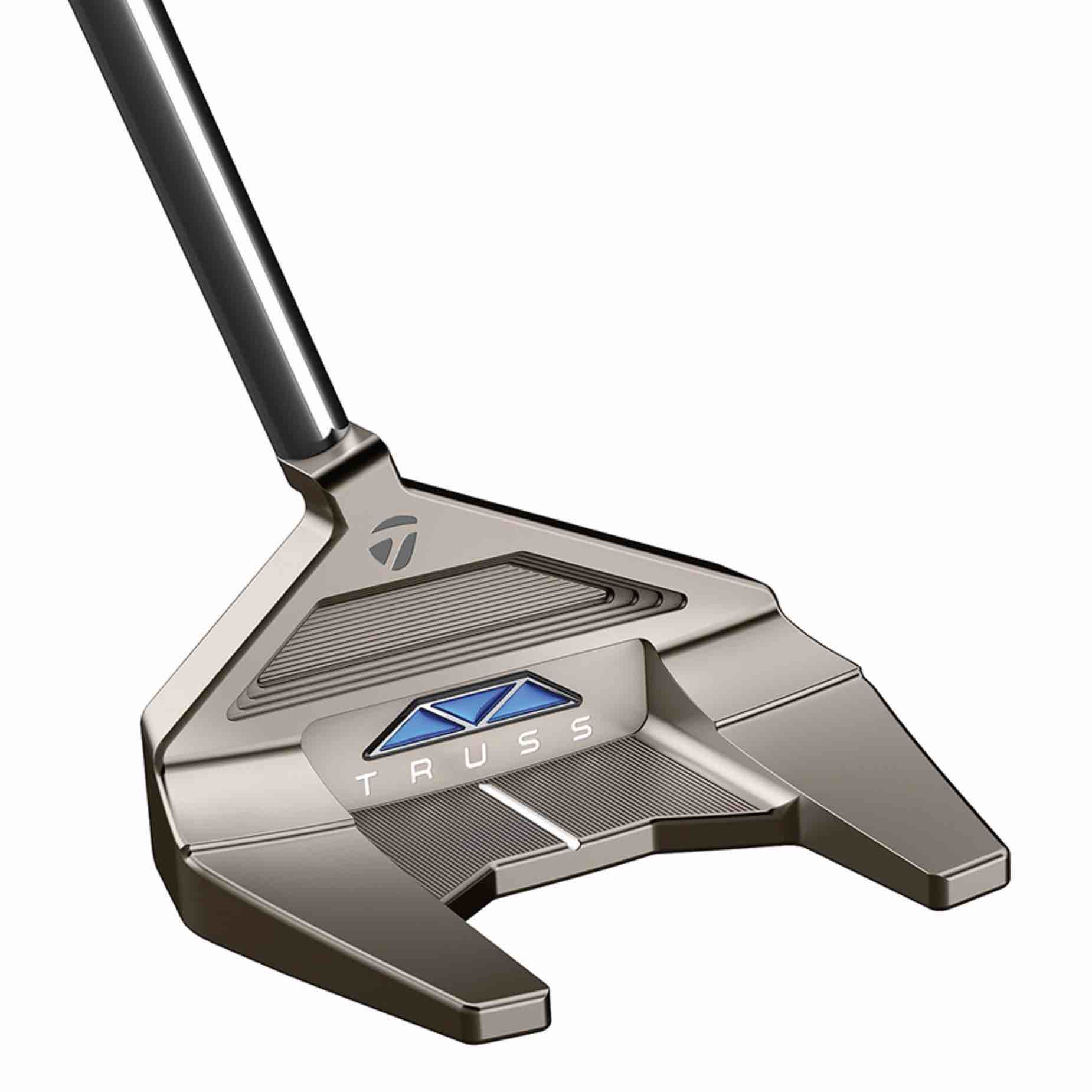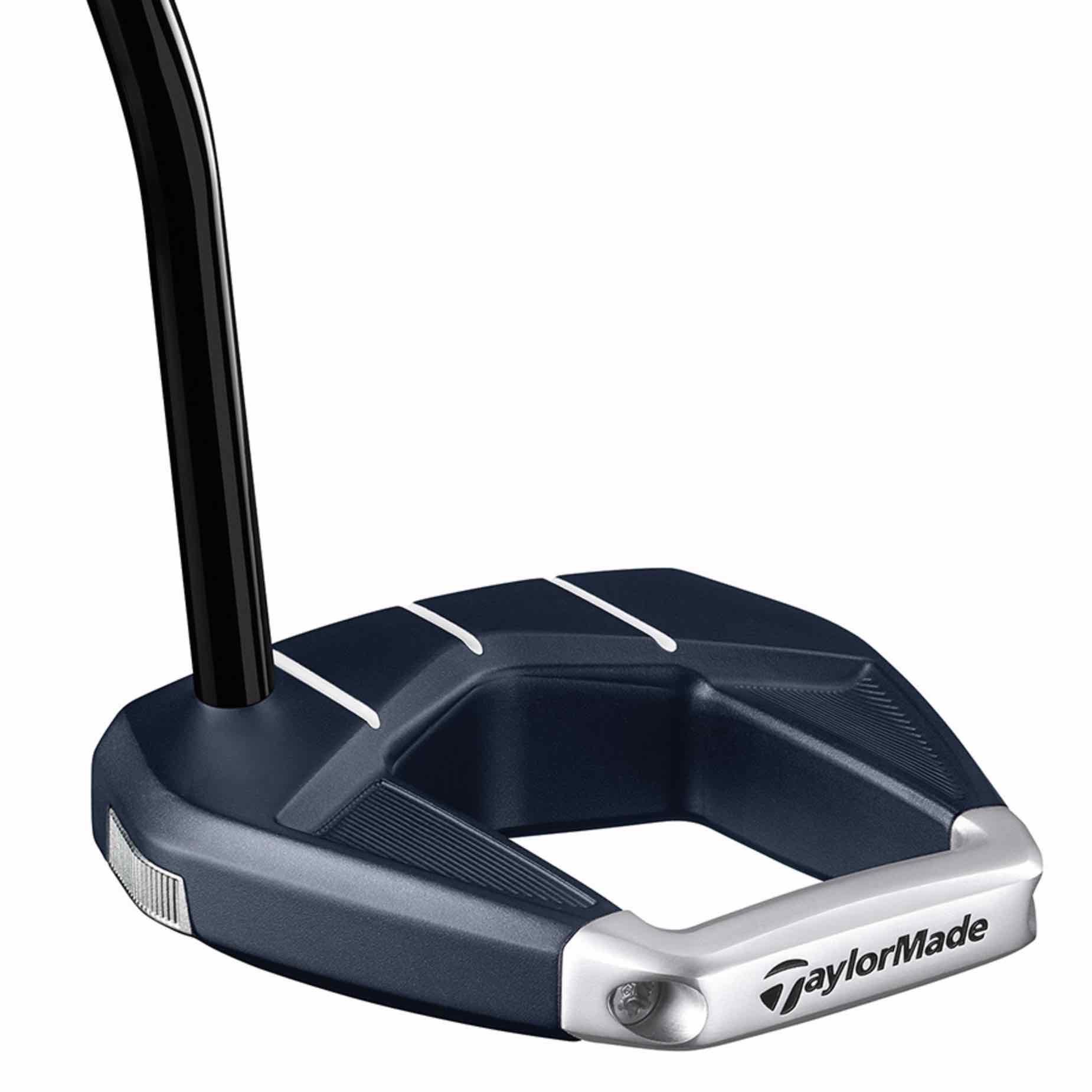The TaylorMade Truss putters, along with the Spider S addition to the company’s top-selling Spider line of mallets, make it clear that you’re not going to get better results with the putter if the head isn’t stable at impact. You’re not going to get better for the simple reason that most of your impacts aren’t centre of the face.
The TaylorMade Truss and Spider S provide two solutions to mis-hit putts. One, the Spider S, is the more commonly seen idea of increasing moment of inertia, which is a measurement of stability on off-centre hits. On the Spider S, like many larger mallets, mjore mass to the extremes makes the energy delivered to the ball at impact more consistent because the face is more stable.
The other solution is a more dramatic move in putter architecture, specifically in the smaller models, and its inspiration not coincidentally comes from architecture. The Truss line is named for the Y-shaped beam structure often employed in tennis rackets. The four putter models in the Truss family all feature a wider, triangular hosel structure that is designed to create stability in the head while maintaining the general size, shape and look at address of traditional heel- and centre-shafted blade and small mallet putters. Stability is a function of shape, said Todd Beach, senior vice president of research, design and engineering at TaylorMade.
“MOI is designed to mitigate that variability and inconsistency in a golfer’s stroke,” Beach said. “But you’re so stuck because MOI is so driven by geometry that you can’t get those looks and get the same MOI. So Truss is a different way to attack that.”

According to TaylorMade’s research the Truss heel and centre-shafted options create a 60 and 80 percent reduction in face deflection compared to a traditional blade putter.
“There’s a little more energy transfer because of that stiffer structure so it’s really no different in the benefits you would see from a high inertia putter,” said Paul Demkowski, senior product development engineer. “By having those two contact points spread out you’re stiffening up that structure as a result. That’s giving us a better sound and feel than what we’ve had in blade structures.”
In effect, Demkowski said the Truss’s hosel structure reduces the amount of the putter blade that is “unsupported” with more of the topline directly connected to the hosel’s mass. The structure is thinned out in such a way as to make the view of these heads from address remain traditional.
The Truss lineup will feature four versions: TB1 (a heel-shafted blade), TB2 (a centre-shafted blade), TM1 (a heel-shafted mallet with parallel wings that extend back from the heel and toe) and TM2 (a similarly shaped centre shafted mallet). Each model features a “PureRoll” face insert similar to that seen on other TaylorMade putters. The insert’s grooves are designed to enhance early forward roll.

While the Truss models all focus on improving the stability of relatively traditional shapes, the Spider S is the company’s next version of a mallet focusing on using geometry and multiple materials to improve off-centre hit stability. The high-MOI mallet shape mixes an aluminium body with 48-gram heel and toe weights in the sole and a heavy rear tungsten bar that changes in weight depending on shaft length (55-, 65- and 80-gram options). The weight bar frames the rear of the putter behind a large cut-out area that redistributes the saved mass further to the perimeter. The result is the putter with the highest MOI in the current TaylorMade lineup (over 6,000 grams-cm2).
The Spider S features a thicker Surlyn grooved “PureRoll” face insert to enhance initial forward roll. It is offered in both a navy and chalk finish.
Stay tuned for Australian pricing and availability.




